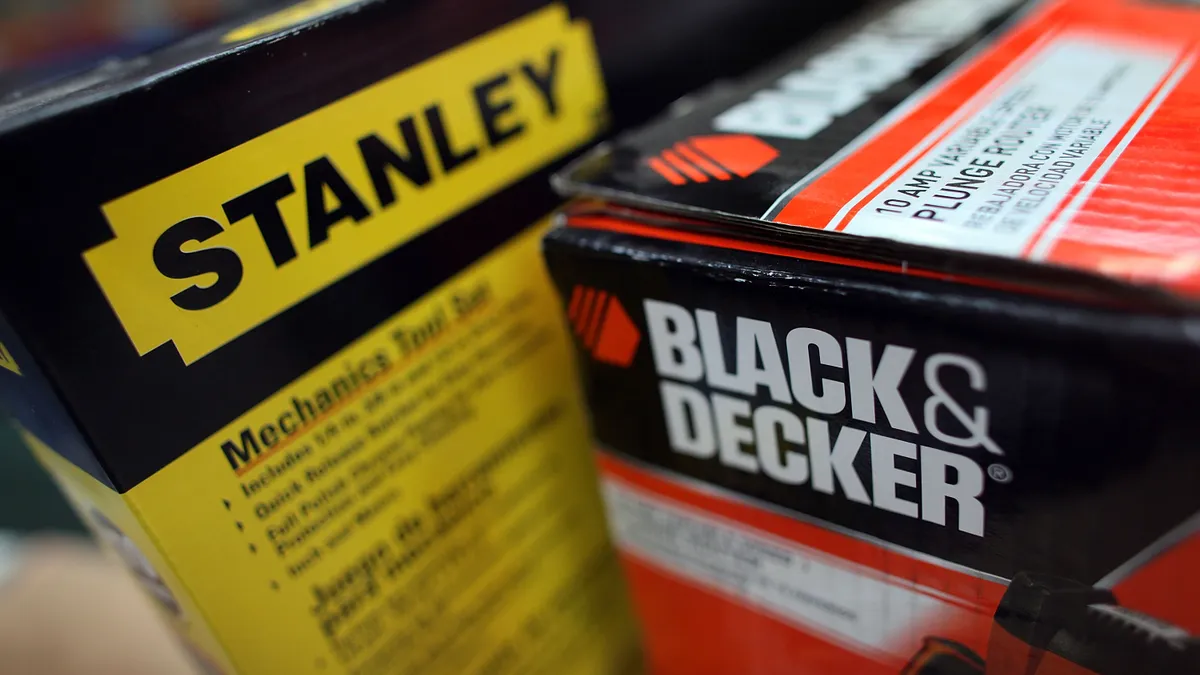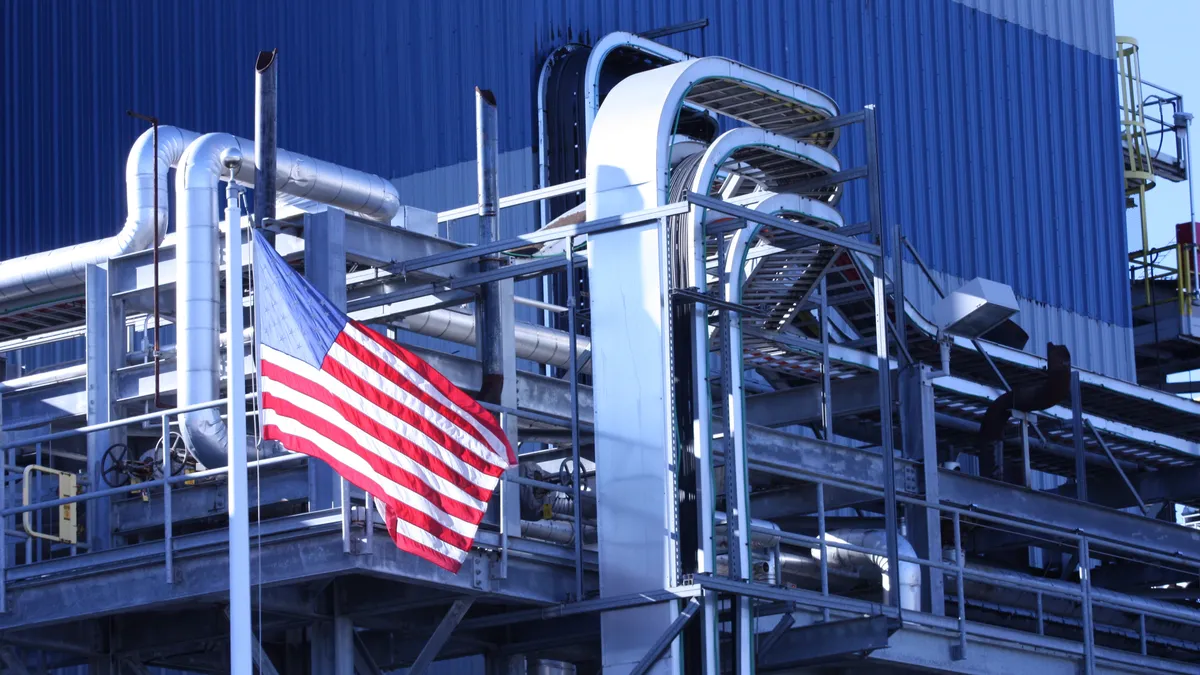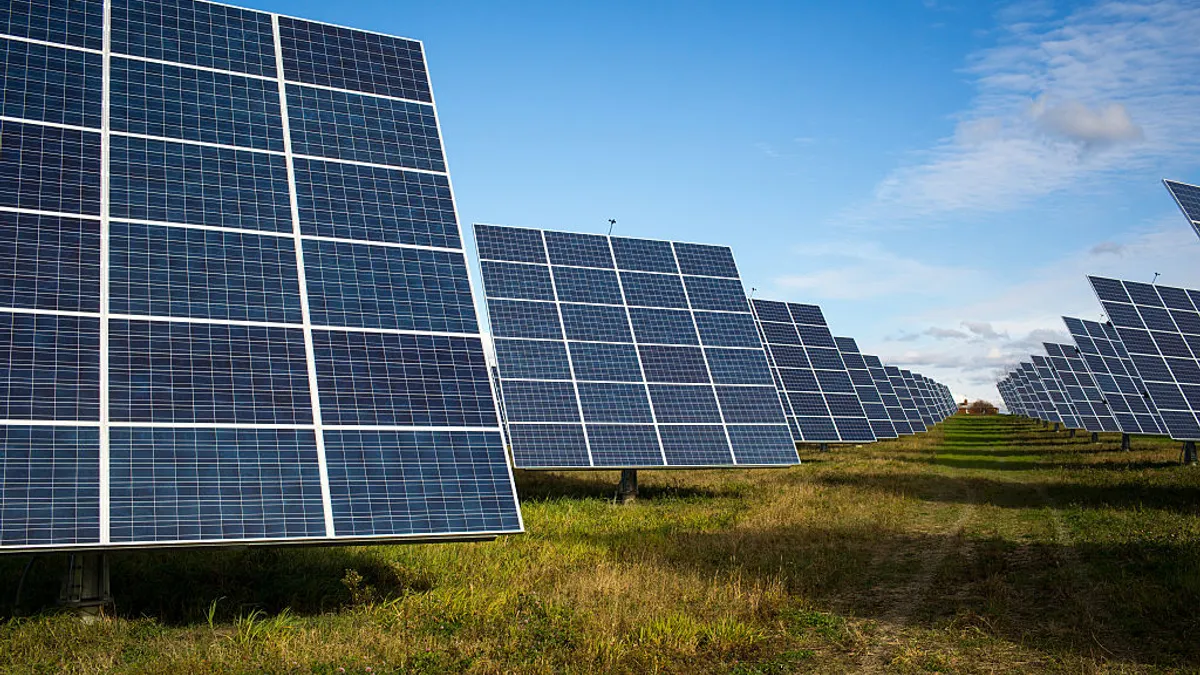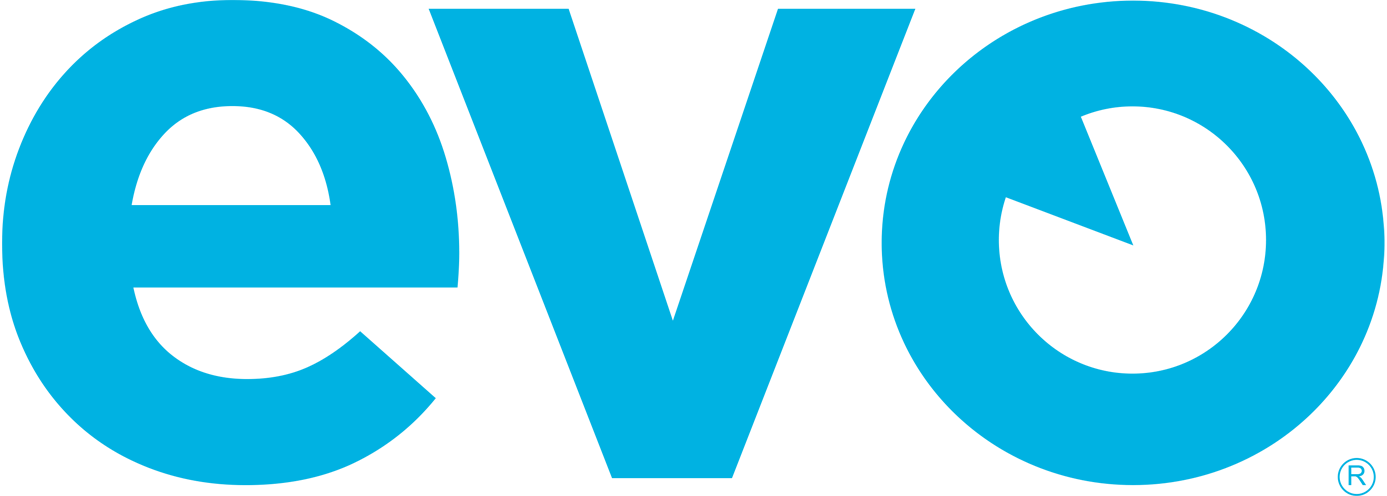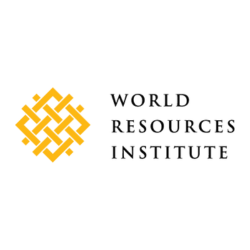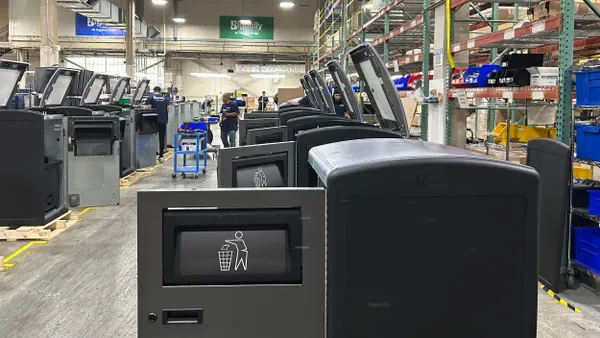Dive Brief:
- Stanley Black & Decker plans to raise its prices again this year as tariff costs continue to weigh on the world’s largest toolmaker. The company initially expected a tariff impact as high as $1.7 billion, but that has since eased as it made operational adjustments and trade negotiations developed.
- After hiking prices by high single-digits in April across U.S. retailers, the company is in early talks to implement a “more modest” round of increases starting in the fourth quarter, COO Christopher Nelson said during a July 29 earnings call.
- Stanley Black & Decker is also continuing to adjust its supply chain configurations to mitigate tariffs and making progress with its multi-year, cost reduction program, which is on track to reach $2 billion in total savings by the end of 2025. The program generated $150 million in cost savings in Q2.
Dive Insight:
As ongoing tariff volatility disrupts trade and commerce, Stanley Black & Decker is focused on achieving 35% adjusted gross margins or higher despite the uncertain economic backdrop, Nelson said on the call.
As part of these efforts, the company is leveraging its North American footprint while reducing its production in China to less than 5% by the end of 2026, Nelson said. It is also collaborating with customers on ways to deliver the most cost-effective products to end-users, and engaging with the U.S. administration on trade-related goals and challenges.
“We plan to leverage supply chain moves and targeted pricing actions to improve our gross margin in the coming quarters,” CEO Donald Allan said. “We believe Q2 to be the low point for gross margins, barring any new large changes to government policies.”
During Q2, Stanley Black & Decker reported revenue of $3.9 billion, a 2% decline from the same period last year, citing a slow outdoor buying season and tariff-related shipment disruptions. A roughly 4% drop in sales volume was offset by a 1% increase in prices and 1% increase in currency.
In addition to the tools and outdoor division, which comprises about 90% of total revenue, the company also has an engineered fastening division that supplies nuts and bolts to manufacturers.
That division generated $484 million in Q2 sales, also down about 2% from a year ago. While it saw strong demand from aerospace customers, the company said declines in the automotive and industrial businesses outweighed those benefits.
The company reported a gross margin of 27% in the quarter, down 140 basis points from last year. It also posted Q2 net earnings of $101.9 million compared to a loss of $19.2 million in Q2 2024.
“Overall, a very solid quarter in a turbulent environment,” Allan said on his last earnings call.
Allan is scheduled to become executive chairman of Stanley Black & Decker, effective October. The company last month named Nelson as his successor.
Following the April price hikes, Nelson said the company saw no noticeable “shift in buying trends,” signaling relatively healthy demand as it works to cut costs and boost margins.
“Our simplified and more nimble supply chain is enabling us to deliver improved profitability, better service for our customers and end users and sustainable market share gains,” Nelson said.
Stanley Black & Decker provided no Q3 outlook, but updated investors on the potential tariffs cost impact for 2025.
The company is forecasting a gross tariff cost impact of $800 million for the year, excluding mitigation efforts. CFO Patrick Hallinan said the calculations factor in 30% incremental tariffs on goods from China, 30% on non-USMCA-compliant goods from Mexico and more than 20% in aggregate on goods from the rest of the world. The company also factored in 50% Section 232 metal tariffs.
Including mitigation efforts, Stanley Black & Decker is expecting a negative earnings per share impact of 65 cents for 2025, which is 10 cents lower than its headwind estimate from Q1.



